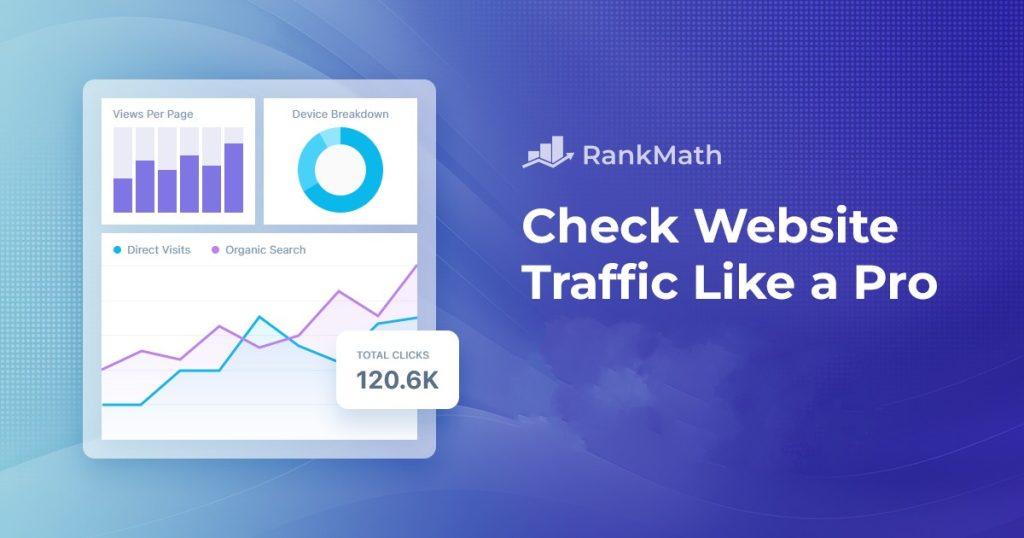Ever sit back and wonder how your competitors are getting all that traffic? Yeah, same here. Whether you are running an online store, a blog, or offering services, figuring out where their traffic comes from can be a total game-changer. It helps you see what’s working for them, spot missed opportunities, and maybe even outsmart them a bit. But let’s be real—tracking their traffic can feel like trying to guess what someone had for lunch last Tuesday.
The upside? You don’t need to be some SEO genius to get started. There are actually some pretty solid ways to dig into your competitors’ traffic sources without getting overwhelmed. A combo of clever tools and smart tactics can show you exactly what’s going on behind the scenes. In this guide, I’ll break it all down—no fluff, no jargon. Just real methods that work, whether you’re new to this or just want a better system. Let’s dive in.
Why Competitor Traffic Analysis Matters More Than Ever
Keeping an eye on your competitors’ traffic isn’t just spying—it’s survival. The online space is overcrowded and constantly changing, so knowing where your competition gets its visitors from can give you a serious edge. Maybe they’re crushing it on Pinterest while you’re stuck on Facebook. Maybe their blog is silently pulling thousands of visits from Google while yours is getting ghosted. Seeing their traffic mix gives you insight into what you’re missing.
More than that, it shows you what channels are worth your time and which ones might be a waste. You will stop shooting in the dark and start aiming with purpose. This means better resource allocation, smarter content planning, and ultimately, higher ROI. Also, patterns in competitor traffic can reveal seasonal trends, recent campaigns, or even if they have got a new backlink strategy. It’s a way of listening to their marketing without them saying a word.
Free Tools to Get You Started Without Spending a Dime
Before you go spending money on premium tools, there are a few solid free options to start poking around with. Tools like SimilarWeb and Ubersuggest offer surface-level insights that can help you get a general sense of a site’s traffic. They won’t be super accurate, but they can give you hints—like whether most traffic is direct, from social, search, or referrals.
Another method? Use the good ol’ Google search bar. Type in site:competitor.com and see what content is being indexed. You can also run competitor URLs through free versions of keyword tools to get a peek at which keywords they rank for. It’s not perfect, but it helps you identify their content strategy. This rough data can act as your starting point before diving deeper with advanced tools.
Using Ahrefs Like a Pro (and Not Just Clicking Around)
Ahrefs is one of the most robust tools out there for tracking competitor traffic. But most users only scratch the surface. Instead of just checking backlink numbers or keyword rankings, dig into their Top Pages report. This shows which pages pull the most traffic and from where. You can then reverse-engineer what’s working by looking at keyword intent, backlink sources, and even content structure.
The Site Explorer is where the magic happens. Use it to see referring domains, anchor text distribution, and traffic value. Pro tip: enable the ahrefs chrome extension while browsing competitor sites to get instant data on any page. And don’t forget to try out the ahrefs free trial if you haven’t yet—it’s a great way to get premium data without spending upfront. You can even explore the ahrefs api pricing if you plan to automate parts of your analysis later.
Traffic Channels Breakdown: Organic, Social, Referral & Paid
Understanding the types of traffic your competitors get is key. Start with organic traffic. If they’re getting massive hits from Google, that tells you their SEO game is strong. Check what keywords they rank for, and whether they’re informational or commercial. This gives you a sense of what kind of content is working. Don’t forget to use organic search google analytics on your own site to compare.
Next up is social traffic. Are they killing it on Instagram or pulling crowds from LinkedIn? Tools like BuzzSumo or Sprout Social can give you social performance insights. For referral traffic, look at where backlinks are coming from. Maybe they’ve guest posted on a site that sends them thousands of hits. Paid traffic is trickier, but with tools like SpyFu or SEMrush, you can get a sense of what ads they’re running and which ones are working.
Checking Website Traffic with Advanced Tools (Beyond Ahrefs)
While Ahrefs is powerful, it is not the only player in the game. SEMrush, SimilarWeb, and SpyFu all offer different angles. SEMrush can show you traffic breakdowns by channel and even estimate ad budgets. SimilarWeb provides data on audience interests and device usage. SpyFu gives insights into PPC strategies and historical keyword changes.
When you use a few of these tools together, you start to get a much clearer picture of what’s really going on. No single tool is perfect—each one misses stuff—so it’s worth comparing data from different sources just to be sure. Also, don’t forget about handy little Chrome plugins like SEOquake or Wappalyzer. They can show you what kind of tech your competitors are using, which might give you clues about the marketing tools behind the scenes. And if your site runs on WordPress, it’s a good idea to hook up the ahrefs wordpress plugin so you can keep an eye on links and keywords without leaving your dashboard. Sometimes, these extra layers of insight uncover trends you wouldn’t catch from the usual surface-level reports.
How to Actually Understand the Numbers (Not Just Look at Them)
Traffic numbers by themselves don’t tell the whole story—you’ve got to dig a little deeper to really get what’s going on. Like, if you notice a competitor’s traffic always jumps in March, maybe that’s a seasonal trend. Or if their traffic suddenly drops off a cliff, it could be a sign they got hit by a Google update or lost some important backlinks. You can often spot these patterns if you pay attention to their blog schedule, new content drops, or what they’re posting on social media.
Then there’s the quality of the traffic—super important. Are people actually sticking around on their site, clicking stuff, maybe even buying something? Or are they bouncing right away? It’s not just about how much traffic they’re getting, but whether it’s the right kind. That’s the difference between someone winging it and someone who really knows what they’re doing. A post that ranks but has a sky-high bounce rate might look good at first glance but could actually be a waste. That’s why you want to look at engagement data whenever you can—tools like the ahrefs report or even public ones like SimilarWeb can help fill in the blanks.
Building Your Own Strategy Based on Their Data
Once you know what’s working for your competitors, it’s time to adapt—not copy. Use their best-performing pages as inspiration, but tailor your content to your audience. If they’re ranking with a listicle, maybe you go deeper with a tutorial. If they get traffic from a guest post, pitch a better version to the same site. Reverse-engineering doesn’t mean replicating—it means innovating with insight.
Create a plan that covers content, backlink strategy, and traffic sources. Set measurable goals, like boosting referral traffic by 25% in three months. And always keep tracking. Tools like the ahref traffic checker and ahrefs website traffic checker can help you stay updated on your progress and any shifts in your competitors’ performance. Data only matters if you act on it consistently.
Conclusion
Tracking your competitor’s website traffic sources like a pro isn’t about spying—it’s about staying competitive. With the right tools, mindset, and a little detective work, you can uncover exactly how others in your niche are getting their traffic and use that intel to shape your own strategy. Whether you’re using the ahref traffic check, diving into an ahrefs report, or comparing notes through the ahrefs chrome extension, you’ve got the resources to go beyond guesswork.
Just remember, data is only half the game. The other half? Taking bold, smart actions based on that data. Stay curious, keep testing, and don’t be afraid to try something new based on what you find. Because in the digital space, being informed is powerful—but being proactive is what gets results. Ready to get started?






